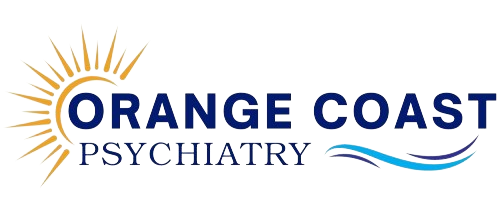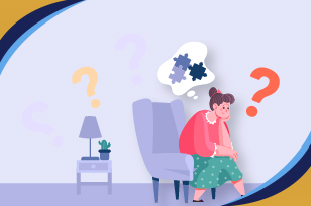Life is stressful, and sometimes, these things can be too much to handle. Trauma, like a car accident, natural disaster, or losing someone you love, can leave you with emotional scars. Two mental health problems that can happen after experiencing trauma are Acute Stress Disorder (ASD) and Post-Traumatic Stress Disorder (PTSD). Although they are similar in some ways, they differ in important ways, which is why the most searched topic of PTSD vs acute disorder has been discussed in this blog.
Let’s explain the difference between acute stress disorder and PTSD and learn about what PTSD and acute stress disorder symptoms include.
What is meant by Acute Stress Disorder?
Acute Stress Disorder is a mental health problem that happens shortly after a traumatic event. It can last anywhere from 3 days to up to 1 month. The symptoms usually start within hours or days after the traumatic event. ASD is like an intense shock to your body that can affect your thoughts, emotions, and behavior in the short term.
Some common causes of ASD include:
- Natural disasters, such as hurricanes and earthquakes
- Accidents (car crashes, workplace injuries)
- Assault (being assaulted, being a witness to a crime of violence)
- Sudden loss (grief or bereavement or loss of a dear one or an intimate)
When someone experiences ASD, they might feel like they are re-living the traumatic event, even though it’s over. It’s as if their brain is stuck in panic mode, trying to process what happened. The symptoms can be quite distressing and may disrupt daily life.
Read More: Understanding Episodic Acute Stress: Causes, Symptoms, And Management
Symptoms of ASD
The signs of ASD are frequently severe and cause discomfort. Some common symptoms include:
- Intrusive memories: Always thinking about the bad thing that happened or having flashbacks and nightmares about it.
- Avoidance: Keeping as far away as possible from any individuals and situations that will make you think of the evil event.
- Hypervigilance: Getting easily frightened, moved by sudden noises, or always feeling something bad will happen.
- Emotional numbness: Feeling like you’re not part of the real world like you’re watching it from the outside.
- Sleep problems: Difficulties finding sleep and maintaining it, as well as sleeping through the night with numerous chilling nightmares.
Since ASD happens soon after trauma, it’s often considered a temporary response. If the symptoms last longer than a month, they may develop into something more long-term, such as PTSD.

What is Post-Traumatic Stress Disorder (PTSD)?
Post-Traumatic Stress Disorder (PTSD) is a more long-lasting mental health condition that can develop after experiencing or witnessing a traumatic event. While ASD occurs soon after the trauma, PTSD symptoms may not show up until weeks or even months later. PTSD is more than just a short-term response; it’s a condition that can persist for months or even years if left untreated.
Like ASD, PTSD can happen after a range of traumatic events, such as:
- Combat or war experiences
- Physical or sexual assault
- Accidents or disasters
- Serious illness or injury
People with PTSD often feel as though they are stuck reliving the trauma. Their brain keeps replaying the event, and the stress response doesn’t go away. This can lead to ongoing emotional and psychological distress, making it hard to move forward in life.
Read More: Trauma Brain Vs Normal Brain: How Trauma Affects The Way We Live
Signs Of PTSD
PTSD usually has worsened symptoms and duration compared to ASD. Common PTSD symptoms include:
- Re-experiencing the trauma: Like in ASD, people with PTSD can always remember traumatic events in their past and relive the event through flashbacks, nightmares, or recurring distressing memories.
- Avoidance: Trauma survivors may avoid things, persons, or environments associated with the traumatic event. For instance, a person in a car accident might not use any car or be a passenger.
- Negative thoughts and moods: People with PTSD may feel hopeless, have trouble remembering the event, or feel guilty and ashamed about what happened.
- Hyperarousal: Being restless or having poor concentration, tense, and ready to jump at anything. It is as if you are constantly living in that fight-or-flight mode.
- Disconnection from reality: It is, for example, common that PTSD may be characterized by dissociation that makes the individual feel like they are observing rather than living their life.
Difference Between ASD and PTSD
While acute stress disorder vs post-traumatic stress disorder is all based on the differences, the key distinction lies in timing and duration:
- The onset of symptoms: ASD symptoms manifest early within days after the traumatic event, while PTSD changes may take weeks or months to manifest.
- Duration: ASD is a relatively short-lived syndrome, taking between 3 days, 1 week, 2 weeks, or up to 1 month. PTSD lasts longer; the patient may take many months or even years to be free from the disorder.
- Progression: For instance, if a person with ASD continues to experience symptoms for up to one month or even after that, he is most likely to be diagnosed with PTSD. But these are not all people with ASD that will progress to PTSD.
- Treatment needs: Whereas both disorders require treatment, PTSD often needs more extensive therapy and counseling because the signs are more ingrained and persistent.
PTSD: Why Some People Develop It, and Others Do Not:
By no means will all individuals who suffer through some type of trauma be destined to develop ASD or PTSD. It is, thus, notable that some people can face very challenging times in their lives with no instance of either condition. The reasons why some people are more vulnerable than others include:
- Personal history: People who have experienced trauma before, such as childhood abuse, are more likely to develop PTSD.
- Mental health: Any comorbidity, including depression, adjustment disorders, dissociative disorders, psychosis, mood disorders, eating disorders, or anxiety disorders, may ramp up the chances of getting PTSD.
- Support systems: Being able to have people to turn to in times of trouble: the company of close ones makes a traumatized person less likely to experience PTSD symptoms.
- The severity of the trauma: Predisposing factors to falling ill with PTSD include a history of worsened or repeated exposure to traumatic events, including chronic abuse or combat.
The Treatment of ASD and PTSD
Luckily, ASD and PTSD support have been effective for quite a long time. It has also been shown that if ASD is addressed immediately, it cannot escalate into PTSD, and the survivors of either of the two states will be more improved. Some common treatments include:
- Cognitive Behavioral Therapy (CBT): This is one of the powerful approaches to the treatment of both ASD and PTSD. CBT involves assisting people to change negative ways of thinking or reacting towards events that trigger trauma symptoms and learning adaptive ways of dealing with those symptoms.
- Exposure Therapy: This type of therapy involves gradually exposing the person to reminders of the trauma in a safe environment to help them overcome their fear and anxiety.
- Eye Movement Desensitization and Reprocessing (EMDR): EMDR is a unique therapy that is used to desensitize clients from traumatic events in order to enable them to process them.
- Psychiatric Medication Management: Selective serotonin reuptake inhibitors, benzodiazepines, and barbiturates may be used to treat ASD and PTSD due to the patient’s anxiety and sleep disturbances.
Self-Care Tips for Coping with Trauma
In addition to professional treatment, here are some ways to cope with trauma and manage stress on your own:
- Talk to someone: It could be a friend, relative, or therapist necessary to offload because it feels good to have someone to share with.
- Practice mindfulness and relaxation: Meditation, yoga, and breathing exercises can help calm your mind and reduce stress.
- Exercise regularly: It is well understood that exercise affects stress hormones and, in turn, enhances an individual’s mood.
- Maintain a routine: Creating a daily routine can bring structure and stability, which can be especially helpful when recovering from trauma.
- Avoid drugs and alcohol: It can be made look like this as a way of dealing with the illness, but alcohol and drugs worsen the symptoms and hamper recovery.
Read More: The Hidden Mental Scars of Childhood Trauma in Adults
Conclusion!
Both Acute Stress Disorder (ASD) and Post-Traumatic Stress Disorder (PTSD) are serious mental health problems that can happen after a traumatic event. While ASD is a short-term reaction, PTSD is a more long-lasting condition that needs ongoing care. Understanding these differences can help people get the right treatment at the right time.
If you or someone you know is struggling with symptoms of ASD or PTSD, it’s important to get professional help. Early intervention can make a significant difference in recovery and help you regain control of your life after trauma. The best pick for you to get rid of acute stress disorder and PTSD signs is the telehealth services of Orange Coast Psychiatry. So, what is the wait for? Get in touch today!
Table Of Comparison
| Symptoms | Acute Stress Disorder (ASD) | Post-Traumatic Stress Disorder (PTSD) |
| Duration of Symptoms | 3 days to 1 month after the traumatic event | More than 1 month after the traumatic event |
| Intrusive Thoughts/Flashbacks | Recurrent, distressing memories or flashbacks | Frequent, vivid flashbacks, nightmares, and intrusive memories |
| Avoidance | Avoiding reminders of the trauma (places, people) | Persistent avoidance of trauma-related stimuli |
| Hypervigilance | Heightened alertness, easily startled | Chronic hypervigilance, exaggerated startle response |
| Emotional Numbness | Feeling detached, dissociation from surroundings | Emotional numbing, detachment, or feeling distant |
| Sleep Disturbances | Difficulty falling or staying asleep, nightmares | Insomnia or recurring nightmares related to trauma |
| Negative Mood | Temporary feelings of confusion, anxiety, or guilt | Persistent negative thoughts, feelings of guilt, shame, or fear |
| Dissociation | Depersonalization or derealization (feeling detached from self or surroundings) | Occasional dissociation, but less prominent than in ASD |
| Concentration Issues | Difficulty focusing or concentrating | Ongoing difficulty with concentration and memory |
| Physical Symptoms | Headaches, stomach aches, sweating, dizziness | Physical tension, headaches, gastrointestinal distress |
| Re-experiencing the Trauma | Brief and intense reliving of the trauma | Frequent re-experiencing through flashbacks, intrusive thoughts |
| Emotional Reactivity | Intense emotional reactions (crying, anger) | Ongoing irritability, outbursts of anger, mood swings |


















